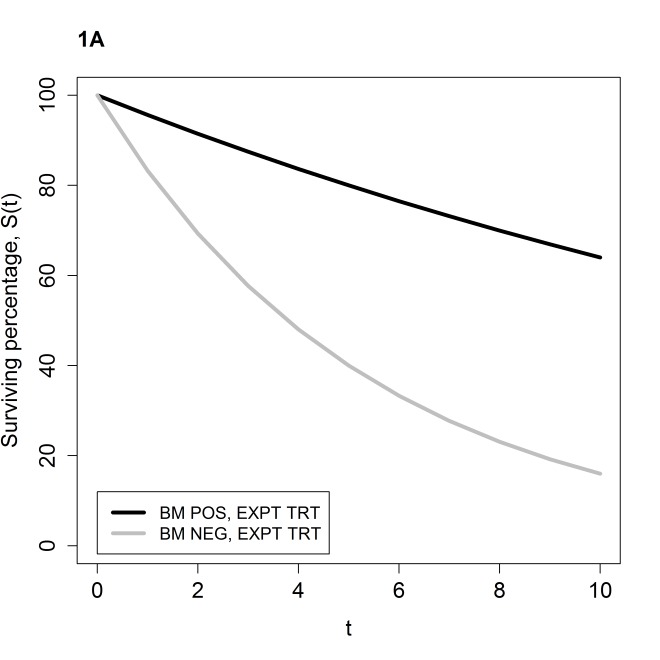From: Understanding Prognostic versus Predictive Biomarkers

NCBI Bookshelf. A service of the National Library of Medicine, National Institutes of Health.


Example of a biomarker that is prognostic but not predictive. Assume that patients have been randomized to the experimental and standard therapies. A) For patients receiving the experimental therapy, those who are positive for the biomarker (black curve) survive longer than those who are negative for the biomarker (gray curve). B) The biomarker is associated with the same difference in survival for those patients receiving the standard therapy (black dashed curve versus gray dashed curve); therefore, it is prognostic. The biomarker is not predictive for benefit of the experimental therapy (solid curves) relative to the standard therapy (dashed curves) because within each biomarker subgroup the survival distribution is the same regardless of treatment received.
From: Understanding Prognostic versus Predictive Biomarkers

NCBI Bookshelf. A service of the National Library of Medicine, National Institutes of Health.